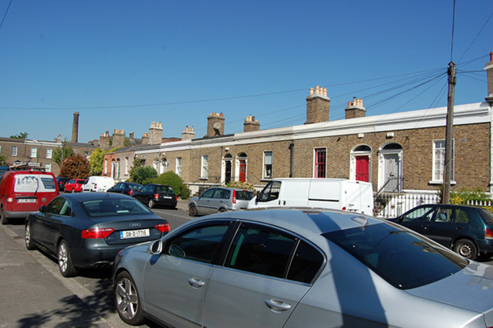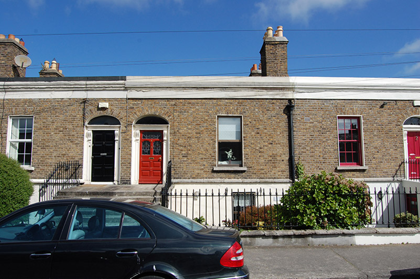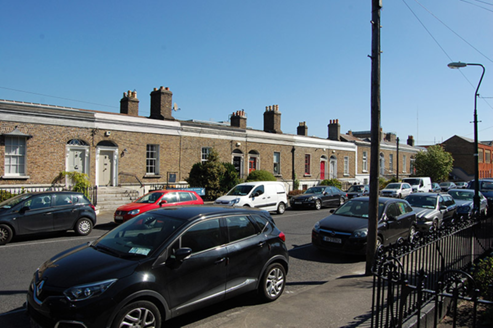Survey Data
Reg No
50110292
Rating
Regional
Categories of Special Interest
Architectural, Artistic
Original Use
House
In Use As
House
Date
1835 - 1845
Coordinates
315433, 233056
Date Recorded
08/05/2017
Date Updated
--/--/--
Description
Terraced two-bay single-storey house over raised basement, built c. 1840. M-profile pitched slate roof having terracotta ridge tiles, shared brown brick chimneystack with clay pots, rendered parapet with cornice and cast-iron rainwater goods. Red brick, laid in Flemish bond, to walls, having cut granite plinth course over lined-and-ruled rendered wall to basement. Square-headed window openings with granite sills, raised render reveals and replacement windows. Elliptical-headed door opening having rendered reveal, timber doorcase comprising panelled pilasters and console brackets supporting frieze, replacement door and plain glazed fanlight. Shared granite steps with cast-iron coal hole cover and bootscrape to platform. Basement area bounded by rendered plinth wall having granite coping surmounted by wrought-iron railings with decorative cast-iron collars, having curved alignment to main entrance steps. Original half-height matching pedestrian gate to basement. Basement door beneath entrance steps. Set back from road, with basement-level front garden.
Appraisal
This house retains its facade composition and building elements including its door surround and ironmongery which are characteristic of its early/mid-nineteenth-century date. The shared scale and features of these small genteel townhouses contribute to the unified residential neighbourhood character of the locality. The streetscape is further enhanced by the uniform retention of elegant iron railings. Pleasants Street along with its neighbouring roads forms part of early Victorian neighbourhood located to the west of Camden Street. The street is named after the philanthropist Thomas Pleasants (1729-1818) who donated money towards the establishment of the nearby Meath Hospital.





